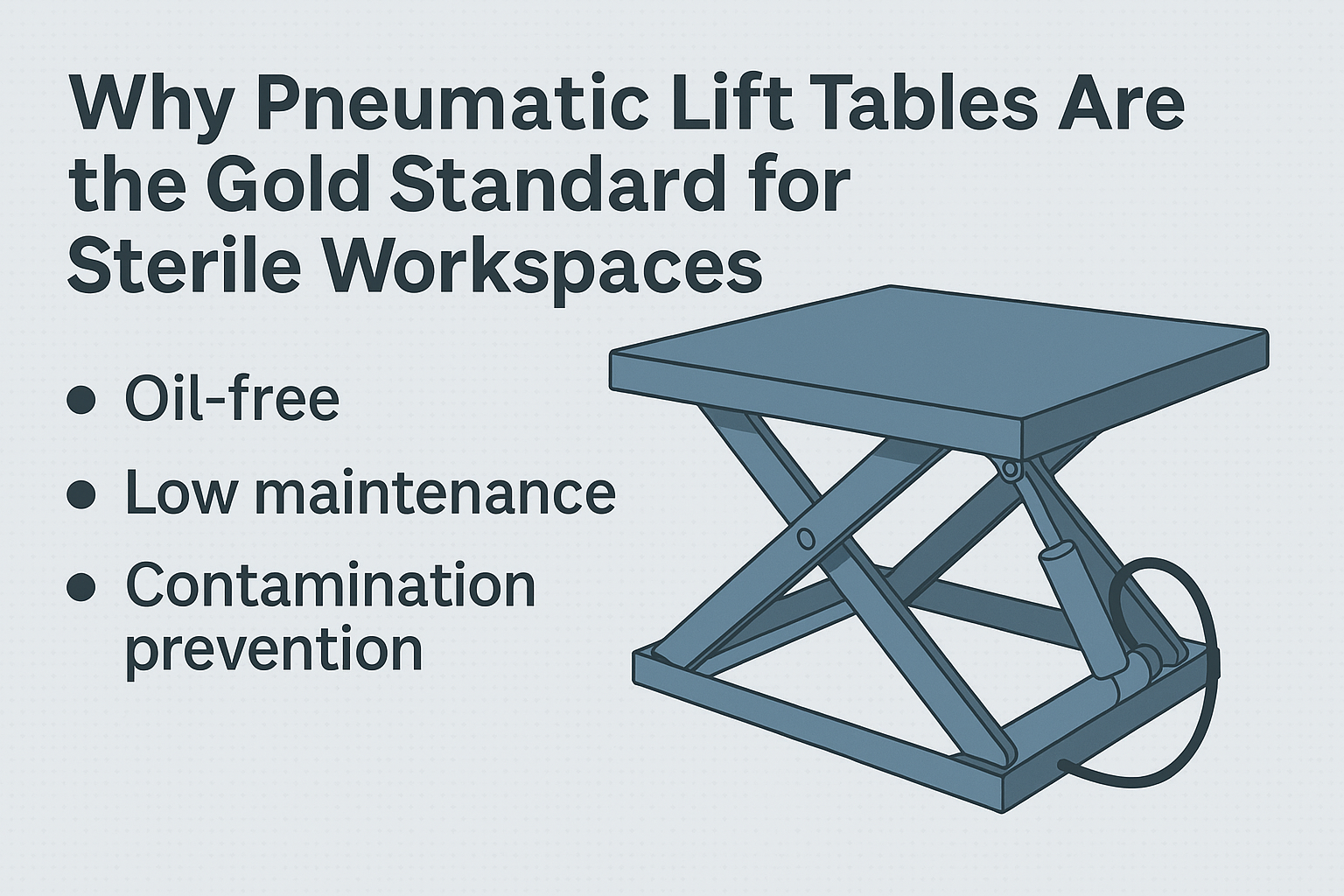
Why Pneumatic Lift Tables Are the Gold Standard for Sterile Workspaces
Explore why pneumatic lift tables outperform hydraulic and electric options in sterile environments. Clean, safe,
Aerial lifts are indispensable tools in various industries, including construction, maintenance, and manufacturing. They allow workers to safely access elevated work areas, but with the added height comes an increased risk of accidents and injuries. To minimize these risks, the Occupational Safety and Health Administration (OSHA) has established guidelines that govern the safe operation of aerial lifts. Compliance with OSHA standards is essential for ensuring the safety of your workers and avoiding costly fines or accidents.
This comprehensive guide will explain how you can ensure your aerial lifts meet OSHA safety standards and how IndustrialManLifts.com can provide the solutions and equipment to keep your operations both safe and compliant.
OSHA sets forth strict regulations for the use of aerial lifts in various industries to ensure worker safety. The main goal is to minimize the risk of accidents caused by falls, equipment malfunctions, or improper operation. To stay compliant, businesses must adhere to a range of safety measures, which include:
Staying up to date on OSHA’s regulations is critical for maintaining a safe work environment and avoiding penalties.
To learn more about the types of aerial lifts that can help your business stay compliant, visit our aerial lifts product page.
One of the key components of OSHA compliance is conducting regular inspections of your aerial lift equipment. OSHA requires that all aerial lifts be inspected prior to each shift and before use to identify any potential hazards, such as:
Performing these inspections not only keeps your aerial lifts OSHA-compliant but also extends the lifespan of your equipment, saving you money in the long run.
Visit our maintenance and inspection resources for tips on how to properly inspect and maintain your aerial lift equipment.
Training your operators is one of the most important aspects of maintaining OSHA compliance. Aerial lift operators must be properly trained and certified to operate the equipment safely. Training should cover:
In addition to initial training, OSHA requires that operators undergo refresher training if they have been involved in an accident, if they demonstrate unsafe practices, or if there is a change in the type of equipment they are operating.
One of the most critical OSHA requirements for aerial lifts is fall protection. OSHA specifies that workers must be protected from falling at heights by:
It’s essential that employers ensure their workers are provided with the proper fall protection equipment and that they are trained in its use. Additionally, aerial lifts should be inspected to ensure that guardrails are securely attached and functioning as intended.
Overloading is a common cause of aerial lift accidents, and it’s one of the areas OSHA monitors closely. Aerial lifts have strict load capacities that must be adhered to at all times. These limits include the combined weight of the operator, tools, and any materials being lifted.
Maintaining stability is crucial, particularly when operating aerial lifts outdoors. Wind, uneven surfaces, and overloading can cause lifts to tip, posing serious risks to workers.
Need aerial lifts that meet strict load capacity requirements? Browse our selection of heavy-duty aerial lifts for more options.
OSHA guidelines can change as new technologies and safety information become available. It’s important to regularly check for updates to OSHA standards, especially when using new types of aerial lifts or when operating in particularly hazardous environments.
Regular safety audits and training sessions can help ensure that your workers and equipment remain compliant with OSHA’s evolving standards. Partnering with a reliable supplier like IndustrialManLifts.com ensures that your equipment is always up to date with the latest safety features and technologies.
Complying with OSHA regulations isn’t just about avoiding penalties—it’s about creating a safe work environment for your employees. By following OSHA guidelines for aerial lift use, you can:
Meeting OSHA’s aerial lift safety standards is essential for protecting your workers, avoiding costly penalties, and maintaining a productive job site. Regular equipment inspections, operator training, proper fall protection, and adherence to load limits are all key components of OSHA compliance.
At IndustrialManLifts.com, we specialize in providing aerial lift solutions that not only meet but exceed OSHA’s safety standards. Whether you need a boom lift, scissor lift, or other aerial work platform, we have the equipment and expertise to help you stay compliant and keep your job site safe.
Ready to enhance your job site’s safety and compliance? Browse our full range of OSHA-compliant aerial lifts today or contact us for personalized assistance in finding the right solution for your business.
By following these steps and utilizing the right equipment, your business can remain OSHA-compliant, minimizing risks and boosting workplace safety. Let IndustrialManLifts.com be your trusted partner in achieving compliance and success!

Explore why pneumatic lift tables outperform hydraulic and electric options in sterile environments. Clean, safe,

From pharma to semiconductors, see how top industries use cleanroom lift tables to maintain compliance,

Understand what makes a lift table truly FDA and GMP compliant. Explore the must-have features,
Copyright 2025 All Rights Reserved – Industrial Man Lifts